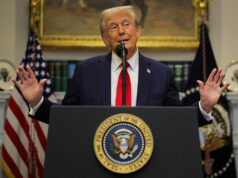Slower Q1 GDP growth seen — poll
By Marissa Mae M. Ramos
Researcher
PHILIPPINE gross domestic product (GDP) growth likely sharply slowed in the first three months of 2020, as the economy faced supply and demand shocks due to the coronavirus disease 2019 (COVID-19) pandemic, a BusinessWorld poll showed.
Using 2018 prices as the base, a BusinessWorld poll of 11 economists yielded a median GDP growth of 2.9% for the first quarter, easing from the 6.7% expansion in the fourth quarter of 2019 and 5.7% in the first quarter of 2019.
If realized, this would be the slowest expansion in a decade or since the 1.8% growth posted in the fourth quarter of 2009.
The forecast is also way below the government’s 6.5%-7.5% target range, which used the previous base of 2000 prices. Economic managers said they are assessing the impact of COVID-19 and the stringent measures imposed to contain it before revising official targets.
On Thursday, National Economic and Development Authority (NEDA) Acting Secretary Karl Kendrick T. Chua said the economy can still post growth in the first quarter.
Earlier, NEDA projected economic growth for the year between 4.3% at the high-end, and 0.6% contraction at the low-end, when the Luzon-wide lockdown was still set to be lifted on April 12.
At that time, NEDA said the low-end of its growth estimate is “still too high” even if the enhanced community quarantine (ECQ) is extended beyond one month “or if the spread of COVID-19 is unabated even after the ECQ.”
The government placed Luzon, which accounts for over 70% of GDP, under lockdown since March 17. The ECQ in Metro Manila and nearby regions has been extended until May 15, but some “low and moderate-risk” areas in Luzon have been under general community quarantine since May 1.
Economists said that even with the lockdown taking effect only in mid-March, its effect on GDP growth for the first quarter is still significant.
“[T]he bulk of the [first quarter] operated largely under normal conditions, outside of course, the area affected by Taal’s volcanic eruption in January,” ING Bank N.V. Manila Senior Economist Nicholas Antonio T. Mapa said in an e-mail. He gave a 3.9% estimate for the first quarter.
“The ECQ implemented in March, however, shuttered businesses and hampered general economic activity with panic buying for basic goods and necessities likely the only driver of growth in that period,” he added.
Rizal Commercial Banking Corp. Chief Economist Michael L. Ricafort shared a similar assessment, adding firms that continued to operate during ECQ as “another offsetting factor.” He expects GDP growth in the first three months to grow between two and three percent.
Colegio de San Juan De Letran Graduate School Dean Emmanuel J. Lopez sees the economy on a “major slump,” estimating growth “not to exceed two percent.”
“Demand, which is represented by consumer spending comprising about 60-70% of GDP is on a major slowdown. Even investment is at a standstill, which negatively affected local employment. The situation may fuel a major economic slump internationally, which may take years to recover,” he said.
Continuum Economics Economist Jessie Lu expects the Philippine economy to slow to 3.1% in the first quarter. “Motor vehicle sales declined at an average rate of 7% year on year in January and February. Government spending also lost strength, dropping by 12.2% in February before fiscal stimulus kicked in,” she said.
“March saw a drastic pullback in manufacturing activities, with [Philippine] manufacturing PMI (Purchasing Managers’ Index) slumping to the lowest level ever of 39.7, from 52.3 in February,” she added, referring to the IHS Markit’s PMI, wherein a reading above 50 signals expansion and those under 50, contraction. PMIs are considered leading indicators of future manufacturing activity as materials for processing must be ordered in advance.
Latest reports showed the Philippine government has set aside around P1.49 trillion, or equivalent to eight percent of GDP, to counter the economic fallout from the coronavirus crisis.
MORE PAIN TO COME
Economists expect the economy to decelerate further or even contract in the second quarter and the rest of the year as the effect of the prolonged lockdown worsens.
“For the rest of the year, we expect the ECQ and future modifications such as gradual lifting and movement restrictions to persist until the end of the year, and with it, a slowdown in consumption that will likely push growth in negative territory,” said Security Bank Corp. Chief Economist Robert Dan J. Roces, who gave a four-percent GDP growth forecast for the first quarter.
“GDP growth could decline by the most in [the second quarter of 2020] due to the extended ECQ in Metro Manila and in other high-risk areas up to May 15… though offset by the government’s huge stimulus measures/COVID-19 programs, monetary easing measures, and other interventions to partly make up for the economic losses due to the lockdown,” RCBC’s Mr. Ricafort said.
ING Bank’s Mr. Mapa expects GDP growth momentum to be “impaired severely” by COVID-19 and subsequent lockdown measures.
“At the end of the day, we had made the painful but easy choice of taking on economic pain to avert public health pain. We expect a recession in 2020 with [contractions in the second and third quarter] as consumption and investment activity remain sidelined… The modest response from the government with the fiscal rescue plan looked to plug holes in the economy left by the virus, but we note that it may not have been enough to avoid the contraction,” Mr. Mapa said.
“BSP (Bangko Sentral ng Pilipinas) easing will help get the economy back on its feet at the quickest time but the downturn looks imminent unless we see a more substantial rescue package to plug more holes in the economy,” he added.
For Continuum Economics’ Ms. Lu, a first-quarter slowdown “could be a harbinger of the pain to come.”
“[The second-quarter] number is bound to be worse. Recovery of economic activities is likely to take some time and will be dependent on how the virus situation unfolds,” she said.




